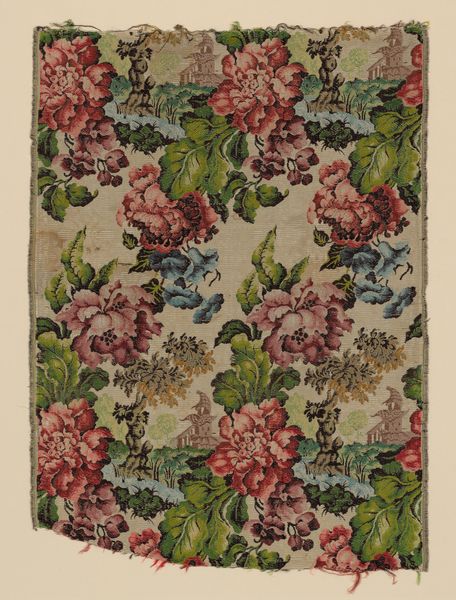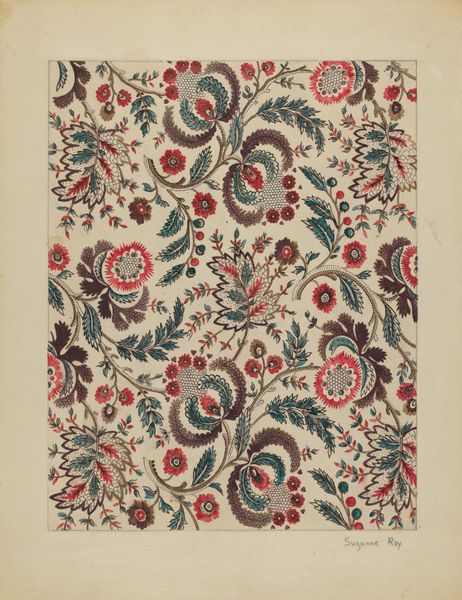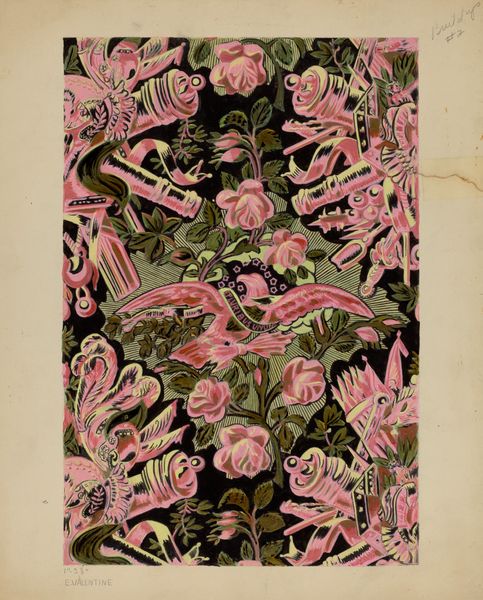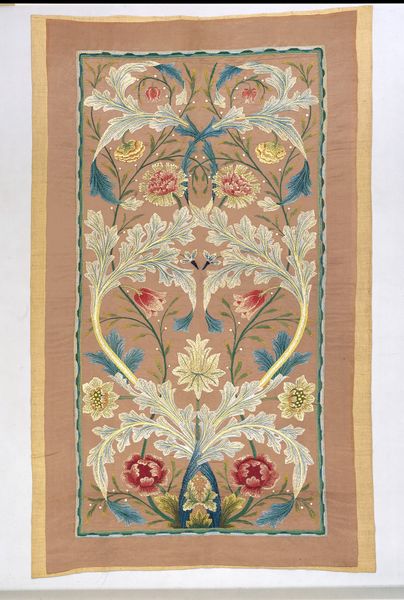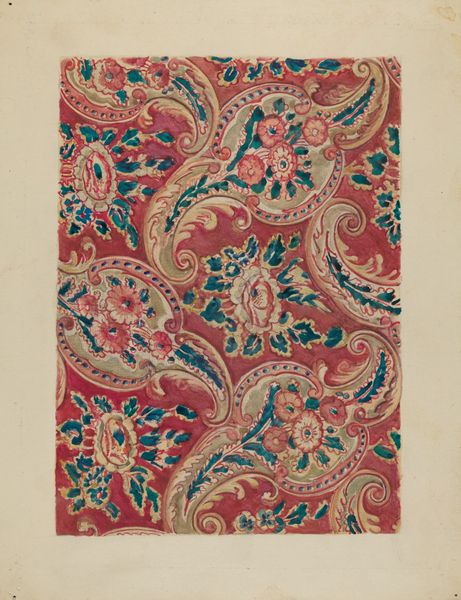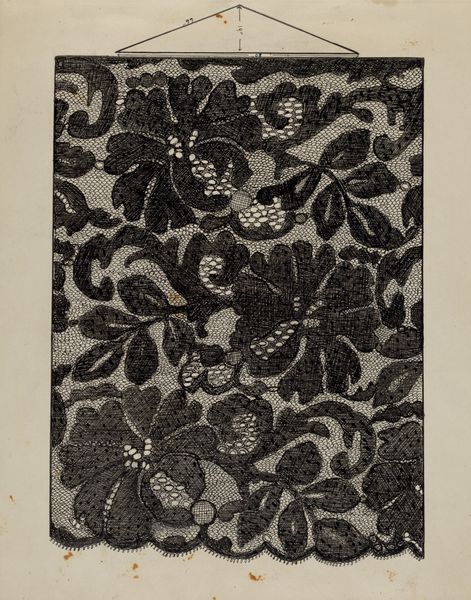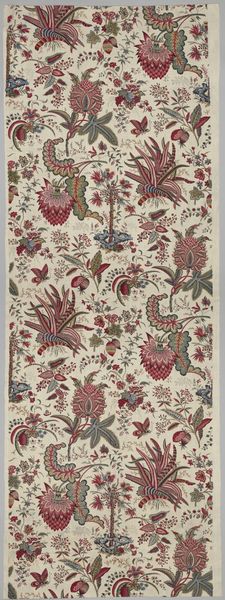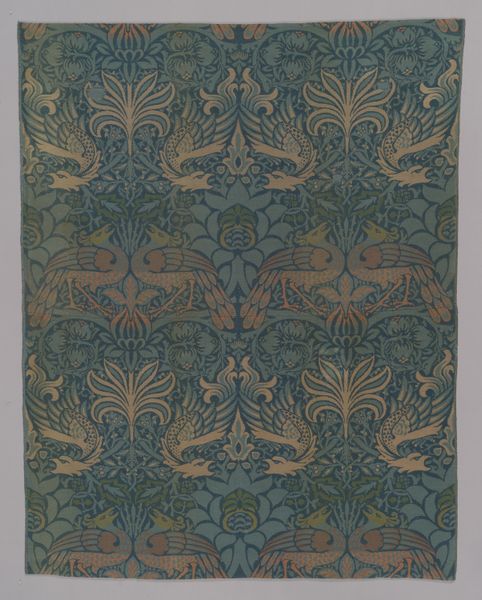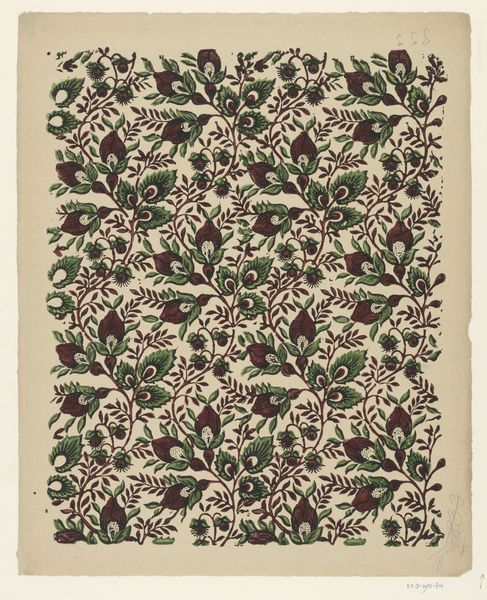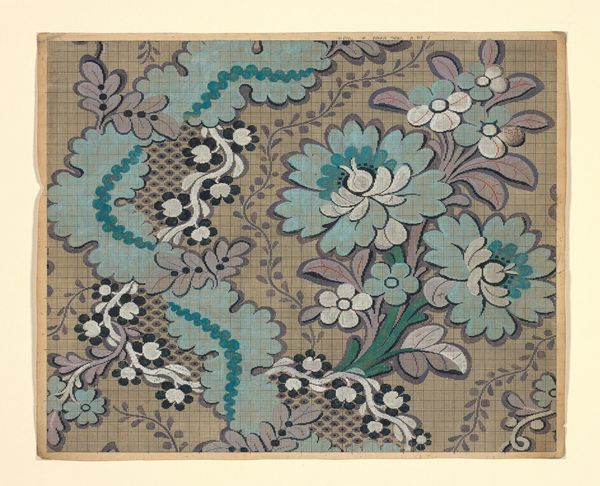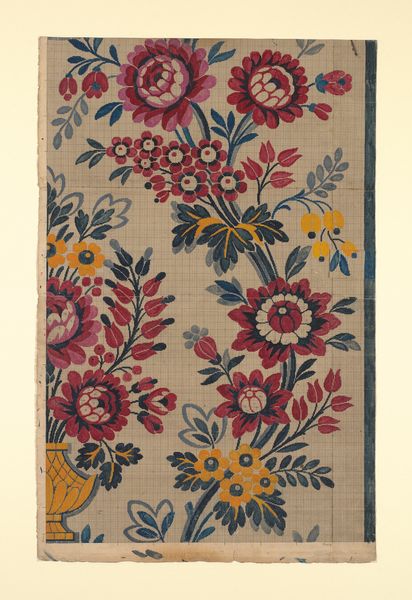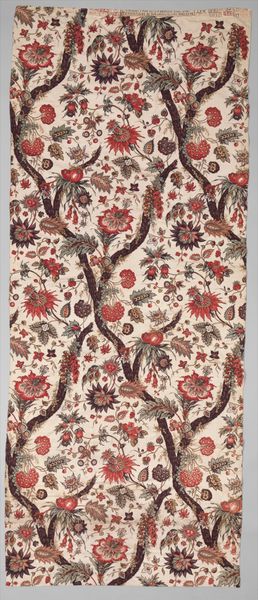
drawing, textile
#
drawing
#
textile
#
textile design
Dimensions: overall: 35.6 x 28.9 cm (14 x 11 3/8 in.) Original IAD Object: 108" long
Copyright: National Gallery of Art: CC0 1.0
Editor: We’re looking at a textile design from around 1939, attributed to Edith Magnette. It’s called "Printed Cotton" and I find the dark backdrop surprisingly appealing given the delicate floral pattern layered on top. What do you see in this piece from a formal perspective? Curator: What immediately strikes me is the tension created by the surface design. Observe how the seemingly organic floral arrangement is rigidly structured by the repeating patterns, especially those borders flanking the left and right edges. Do you see how that structure pushes against any possibility of representing the natural world? Editor: Yes, I see what you mean. It’s decorative more than representational, even though there are flowers depicted. So it's the construction that matters, and less about the subject. Curator: Precisely. Note also how Magnette employs a relatively limited color palette. This constraints allows for greater visual coherence. What might have been lost in naturalism, is amplified by structural harmony. Look how each choice is interdependent. How does that structured simplicity affect you? Editor: It almost feels both comforting and maybe…a little stifling? The formal choices create beauty, but perhaps at the expense of true expressiveness or individuality? Curator: An interesting point. Does the concept of artistic intention and self expression affect the piece, if we only see the visible relationships of form, shape and colour in their specific construction? Editor: I suppose it shouldn’t, according to the formalist approach. The visual elements themselves are what we should be considering above all. Thanks for helping me tease that out! Curator: Of course. Formalism encourages us to shed preconceived notions and truly see. I appreciate your insight regarding the potential trade-off between formal beauty and raw, unfiltered expression.
Comments
No comments
Be the first to comment and join the conversation on the ultimate creative platform.
